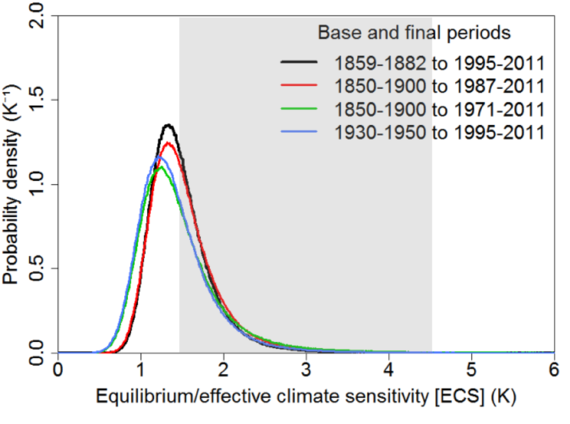Nic Lewis reports on the publication of a very important paper in
Journal of Climate.Bjorn Stevens has created a new estimate of the cooling
effects of pollution ("aerosols") on the climate. Readers will no
doubt recall that to the extent that aerosol cooling is small the warming
effect of carbon dioxide must also be small so that the two cancel out to match
the observed temperature record. Only if aerosol cooling is large can the
effect of carbon dioxide be large.......Remember folks, the IPCC's official upper bound is 4.5°C, but Stevens' results
suggest that ECS can't be above 1.8°C. Jim Hansen, Bob Ward, Kevin Trenberth,
Michael Mann and Gavin Schmidt, your climate alarmism just took one helluva
beating. --Andrew Montford, Bishop Hill, 19 March 2015
Since [the publication of the IPCC’s] AR5, various papers concerning aerosol forcing have been published, without really narrowing down the uncertainty range. Aerosol forcing is extremely complex, and estimating it is very difficult. In this context, what is IMO a compelling new paper by Bjorn Stevens estimating aerosol forcing using multiple physically-based, observationally-constrained approaches is a game changer. --Nic Lewis, Climate Audit, 19 March 2015
Since [the publication of the IPCC’s] AR5, various papers concerning aerosol forcing have been published, without really narrowing down the uncertainty range. Aerosol forcing is extremely complex, and estimating it is very difficult. In this context, what is IMO a compelling new paper by Bjorn Stevens estimating aerosol forcing using multiple physically-based, observationally-constrained approaches is a game changer. --Nic Lewis, Climate Audit, 19 March 2015

No comments:
Post a Comment